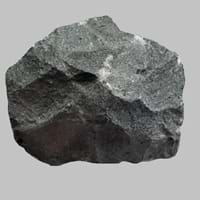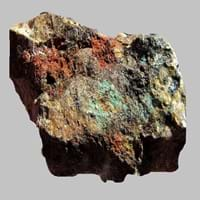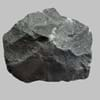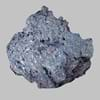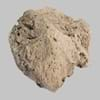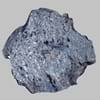Definition
Latite is an igneous, volcanic rock, with aphanitic-aphyric to aphyric-porphyritic texture
Jasperoid is a rare, peculiar type of metasomatic alteration of rocks
Discoverer
Unknown
Unknown
Etymology
From the Latin word latium
From silica, the main mineral content of Jasperoid
Class
Igneous Rocks
Sedimentary Rocks
Sub-Class
Durable Rock, Medium Hardness Rock
Durable Rock, Medium Hardness Rock
Group
Volcanic
Not Applicable
Other Categories
Fine Grained Rock, Opaque Rock
Coarse Grained Rock, Fine Grained Rock, Medium Grained Rock, Opaque Rock
Texture
Aphanitic to Porphyritic
Earthy
Color
Black, Brown, Colourless, Green, Grey, Pink, White
Black, Brown, Colourless, Green, Grey, Pink, White
Durability
Durable
Durable
Scratch Resistant
Yes
Yes
Appearance
Rough
Glassy or Pearly
Interior Uses
Decorative Aggregates, Entryways, Interior Decoration
Decorative Aggregates, Floor Tiles, Homes, Interior Decoration
Exterior Uses
As Building Stone, As Facing Stone, Garden Decoration, Office Buildings
As Building Stone, Garden Decoration, Office Buildings, Paving Stone
Other Architectural Uses
Curbing
Curbing
Construction Industry
As a Flux in the Production of Steel and Pig Iron, As a Sintering Agent in Steel Industry to process Iron Ore, As Dimension Stone, Cement Manufacture, for Road Aggregate, Making natural cement, Manufacture of Magnesium and Dolomite Refractories
As a Flux in the Production of Steel and Pig Iron, As a Sintering Agent in Steel Industry to process Iron Ore, As Dimension Stone, Cement Manufacture, for Road Aggregate, Making natural cement, Manufacture of Magnesium and Dolomite Refractories, Production of Glass and Ceramics, Serves as an Oil and Gas Reservoir rock
Medical Industry
Not Yet Used
Taken as a Supplement for Calcium or Magnesium
Antiquity Uses
Artifacts, Monuments, Sculpture
Artifacts, Jewellery, Monuments, Sculpture
Commercial Uses
An Oil and Gas Reservoir, As a Feed Additive for Livestock, Metallurgical Flux, Soil Conditioner, Source of Magnesia (MgO)
An Oil and Gas Reservoir, As a Feed Additive for Livestock, Gemstone, Metallurgical Flux, Production of Lime, Soil Conditioner, Source of Magnesia (MgO)
Types
Rhomb porphyries
Not Available
Features
Host Rock for Lead
Host Rock for Lead, Traps for subsurface fluids like Oil and Natural Gas., Zinc and Copper Deposits
Archaeological Significance
Famous Monuments
Data Not Available
Data Not Available
Famous Sculptures
Data Not Available
Data Not Available
Formation
Latite is a fine-grained, hard rock which is a type of metasomatite, essentially altered basalt. It forms with or without crystallization, either below the surface as intrusive rocks or on the surface as extrusive rocks.
Jasperoid is a rare and peculiar type of metasomatic alteration of rocks. It is formed by extreme alteration of wall rocks within a shear zone which may occur in sediments, andesites, trachytes and basalts.
Mineral Content
Alkali feldspar, Biotite, Plagioclase, Pyroxene
Clay Minerals, Pyrite, Quartz, Sulfides
Compound Content
CaO, Cl, MgO
NaCl, CaO, Carbon Dioxide, Magnesium Carbonate, MgO
Types of Metamorphism
Burial Metamorphism, Cataclastic Metamorphism
Burial Metamorphism, Cataclastic Metamorphism, Regional Metamorphism
Types of Weathering
Biological Weathering, Chemical Weathering, Mechanical Weathering
Not Applicable
Types of Erosion
Chemical Erosion, Water Erosion, Wind Erosion
Not Applicable
Grain Size
Fine Grained
Medium to Fine Coarse Grained
Fracture
Conchoidal
Conchoidal
Porosity
Very Less Porous
Less Porous
Luster
Subvitreous to Dull
Vitreous and Pearly
Specific Gravity
2.86
2.8-3
Transparency
Translucent
Transparent to Translucent
Density
2.8-2.9 g/cm3
2.8-2.9 g/cm3
Resistance
Heat Resistant, Pressure Resistant
Heat Resistant, Pressure Resistant, Wear Resistant
Deposits in Eastern Continents
Asia
Not Yet Found
China, India
Africa
Not Yet Found
Morocco, Namibia
Europe
Bulgaria
Austria, Italy, Romania, Spain, Switzerland
Others
Not Yet Found
Not Yet Found
Deposits in Western Continents
North America
USA
Mexico, USA
South America
Not Yet Found
Brazil, Colombia
Deposits in Oceania Continent
Australia
Not Yet Found
New South Wales, Queensland, Yorke Peninsula
Latite vs Jasperoid Characteristics
Though some rocks look identical, they have certain characteristics which distinguish them from others. Characteristics of rocks include texture, appearance, color, fracture, streak, hardness etc. Latite vs Jasperoid characteristics assist us to distinguish and recognize rocks. Also you can check about Properties of Latite and Properties of Jasperoid. Learn more about Latite vs Jasperoid in the next section. The interior uses of Latite include Decorative aggregates, Entryways and Interior decoration whereas the interior uses of Jasperoid include Decorative aggregates, Floor tiles, Homes and Interior decoration. Due to some exceptional properties of Latite and Jasperoid, they have various applications in construction industry. The uses of Latite in construction industry include As a flux in the production of steel and pig iron, As a sintering agent in steel industry to process iron ore, As dimension stone, Cement manufacture, For road aggregate, Making natural cement, Manufacture of magnesium and dolomite refractories and that of Jasperoid include As a flux in the production of steel and pig iron, As a sintering agent in steel industry to process iron ore, As dimension stone, Cement manufacture, For road aggregate, Making natural cement, Manufacture of magnesium and dolomite refractories, Production of glass and ceramics, Serves as an oil and gas reservoir rock.
More about Latite and Jasperoid
Here you can know more about Latite and Jasperoid. The life cycle of a rock consists of formation of rock, composition of rock and transformation of rock. The composition of Latite and Jasperoid consists of mineral content and compound content. The mineral content of Latite includes Alkali feldspar, Biotite, Plagioclase, Pyroxene and mineral content of Jasperoid includes Clay Minerals, Pyrite, Quartz, Sulfides. You can also check out the list of all Igneous Rocks. When we have to compare Latite vs Jasperoid, the texture, color and appearance plays an important role in determining the type of rock. Latite is available in black, brown, colourless, green, grey, pink, white colors whereas, Jasperoid is available in black, brown, colourless, green, grey, pink, white colors. Appearance of Latite is Rough and that of Jasperoid is Glassy or Pearly. Properties of rock is another aspect for Latite vs Jasperoid. The hardness of Latite is 5-5.5 and that of Jasperoid is 3.5-4. The types of Latite are Rhomb porphyries whereas types of Jasperoid are Not Available. Streak of rock is the color of powder produced when it is dragged across an unweathered surface. The streak of Latite and Jasperoid is white. The specific heat capacity of Latite is 0.92 kJ/Kg K and that of Jasperoid is 0.92 kJ/Kg K. Depending on the properties like hardness, toughness, specific heat capacity, porosity etc., rocks are resistant to heat, wear, impact, etc.Latite is heat resistant, pressure resistant whereas Jasperoid is heat resistant, pressure resistant, wear resistant.
